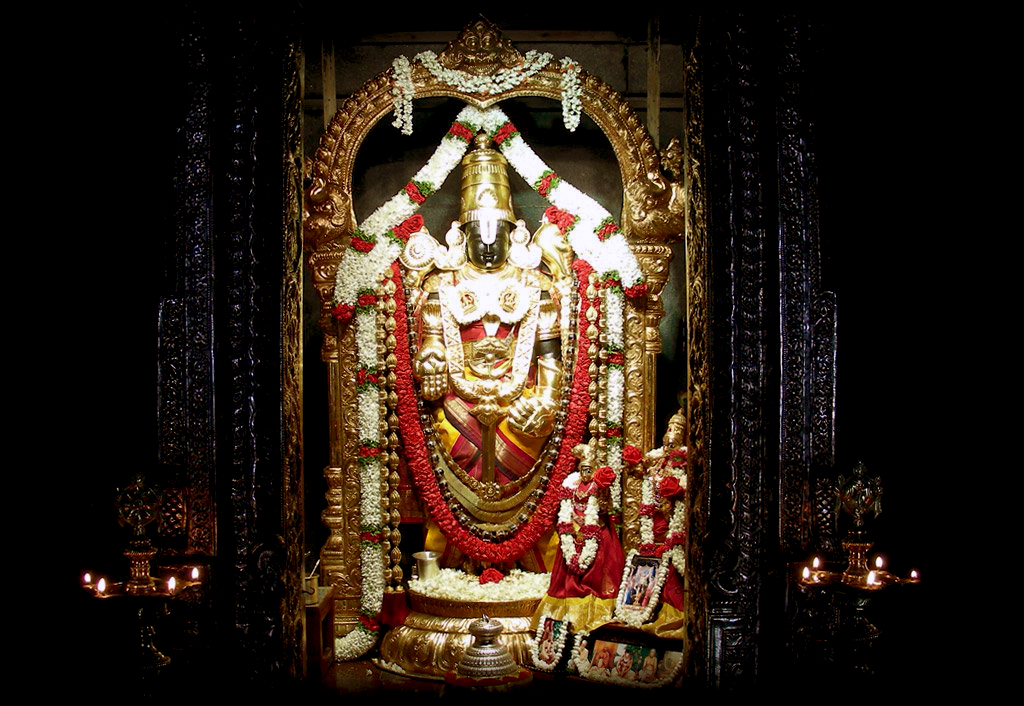 |
| Vishnu in the form of Venkateswara or Balaji in Tirupathi. Picture source unknown. |
The cosmos is known as Purusha and the energy or nature that sustains it is called Prakriti. If Purusha is Static, Prakriti is Dynamic. The Chinese call it Yin and Yang. For the Saivites, Siva is Purusha and Sakthi is Prakriti.
In the Vaishnava religion, Narayana or Vishnu takes up the role of Purusha. His energy is called Vaishnavi. Vishnu is also the Preserver and Protector of Dharma. As we all know, Vishnu has many Avatars or incarnations.
In the Bhagavat Gita, Krishna mentioned that whenever there is a decline in Dharma, he will be reborn again and again to uphold Dharma. This brings us back to the concept of Purusha or the cosmos itself.
The cosmos repairs itself. It does not have an external input to fix its internal problems. Because there is nothing external. Everything is internal and happens within the cosmos.
Whenever there is a problem, the Purusha will manifest itself to solve it. Whenever someone stands up for the right thing and restores order during desperate times especially when all hope is lost, such person will be considered as the manifestation of the Purusha itself.
Krishna was needed to slay Kamsa, Rama was needed to slay Ravana. Their act restored order. Hence they are considered as Avatara Purusha; the Purusha (Vishnu) that incarnated/manifested.
There is an Avatara Purusha in each of us. It will and it must manifest in times of need. A separate God in blue will not appear to fix the problems in our society. We are the solution for our problems. We are our own saviour.
 |
| Pic Credit: Madhurya |




No comments:
Post a Comment